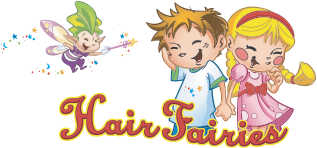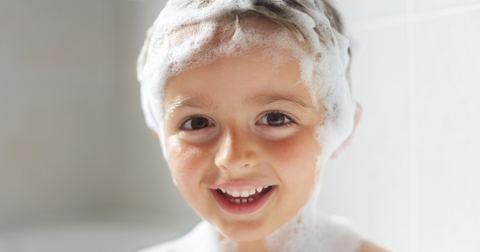For many, the immediate reaction to a lice infestation is to run to the pharmacy and grab the most potent chemical treatment available. However, as concerns over the harshness and potential side effects of chemical treatments grow, many are looking towards more natural alternatives for lice prevention and remedy.
How Do Head Lice Spread?
Head lice, often just referred to as lice, are tiny insects that take residence in human hair.
For many, just the mention of these pesky bugs can cause a shudder, but understanding them is the first step in effective prevention.
Lifecycle of Lice
- Eggs (nits): These are lice eggs laid by the female on hair shafts close to the scalp. They're oval and usually yellowish-white in color. Nits take about a week to hatch.
- Nymphs: Post-hatching, what emerges is a nymph, which is an immature louse. These nymphs mature into adult lice within 7 days. During this phase, they feed on the blood from the human scalp to sustain themselves.
- Adult lice: Fully-grown lice are about the size of a sesame seed, have six legs, and a tan to grayish-white color. They can live up to 30 days on a person's head, feeding on blood several times a day. Without their human host, they die within two days.
How They Spread
- Direct contact: Lice are nimble crawlers. They can't jump or fly but can crawl from one head to another during close contact. This is why head-to-head contact during play, sleepovers, or sports activities among children is a common route of transmission.
- Indirect contact: While less common, lice can also be spread through sharing personal items like combs, brushes, hats, and headphones, or even through lying on a bed, couch, pillow, or carpet that has recently been in contact with an infected person.
Avoiding Lice Transmission
Despite their minuscule size, lice are surprisingly adept at transmission, especially in communal settings. Their primary method of spread is through direct head-to-head contact, but there are other ways one can unwittingly invite them aboard.
Understanding the avenues of transmission and proactively guarding against them is vital in the quest to remain lice-free. Here's a guide to sidestepping those sneaky lice transfers:
Limit Head-to-Head Contact
Direct contact is the most common way lice spreads, especially among children who play closely. Educate kids about the importance of avoiding head-to-head contact during play. For adults, be cautious in crowded places or during close interactions.
Beware Shared Personal Items
Lice can survive for a short period off the scalp. Using someone's comb, hat, scarf, or headphones can expose you to lice. Always use personal items and discourage sharing. If an item must be shared, ensure it's cleaned thoroughly before the next use.
Bedding and Towels
If a person with lice has used a pillow, towel, or bedding, there's a risk of lice or nits lingering. Regularly wash and dry bedding and towels on high heat. If someone in the household has lice, be extra diligent in cleaning their bedding and personal items.
Routine Checks
Regular scalp checks, especially for school-going children, can help in early detection, preventing further spread. In good lighting, part the hair and look for tiny white nits attached to hair strands or adult lice moving about. Using a fine-toothed comb on wet hair can also aid in detection.
Natural Ways to Prevent Lice

As the saying goes, prevention is better than cure. Many individuals prefer to steer clear of chemical treatments and are in search of natural methods.
Here are some tried-and-true natural ways to keep those pesky critters at bay:
Hair Care Practices
- Keep Hair Tied Up: Especially for those with long hair, keeping it tied up in braids, buns, or ponytails can reduce the chances of lice latching on. This limits the hair's exposure and makes it less accessible for lice.
- Regular Hair Washing: While lice can thrive in clean hair, maintaining hygiene can help. When combined with natural repellents, this practice can deter lice.
Essential Oils as Repellents
- Benefits: Essential oils are known for their aromatic properties, and many have insect-repelling qualities. They can be a natural barrier against lice.
- How to Use: Mix a few drops of the chosen essential oil with water in a spray bottle. Spritz it on the hair and scalp daily or every other day. Alternatively, these oils can be added to regular shampoos.
- Product Spotlight: For a ready-to-use solution, consider Hair Fairies’ Nit-Zapping Lice Prevention Oil and Spray. Infused with a blend of potent essential oils, this product ensures maximum lice protection with every use.
- Recommended Oils:
- Tea Tree Oil: Widely recognized for its anti-lice properties.
- Lavender Oil: Not only repels lice but also gives a soothing scent.
- Peppermint Oil: Its strong aroma can deter lice.
- Eucalyptus Oil: Known for its insect-repellent properties.
Herbal Repellents
- Rosemary: This herb has been traditionally used for hair health and lice prevention. Rosemary water can be used as a hair rinse.
- Neem: With its natural insecticidal properties, neem oil or extracts can be applied to the scalp and hair.
- Lemongrass: Lemongrass oil or lemongrass-infused water can act as a repellent.
- Incorporation in Daily Hair Care: Herbal infusions can be made by boiling the herbs in water and using them as a final rinse after shampooing. Oils can be mixed with carrier oils (like coconut oil) and applied to the scalp.
Proper Hygiene Habits
- Frequent Linen Washing: Regularly wash bed linens, pillow covers, and scarves in hot water, followed by a session in the dryer at high heat. This can kill any lice or nits that might have fallen off.
- Product Tip: Add a capful of Heavy Duty Eucalyptus Laundry Detergent to your laundry load. Its eucalyptus formulation not only cleans but also acts as a preventive measure against potential lice infestations.
- Avoid Sharing Personal Items: Educate children and family members about the importance of not sharing combs, brushes, hats, or any hair accessories.
Regular Head Checks
- Routine Inspection: Especially if there's an outbreak in the community or school, regular checks using a fine-toothed comb can help in early detection and prevention.
- Be Vigilant: Even without any signs, it's good to inspect the head, especially behind the ears and near the nape of the neck, areas where lice commonly thrive.
Myths and Misconceptions About Head Lice
Let's debunk some of the most pervasive myths about head lice:
Only Dirty People Get Lice
Lice are not discerning. Anyone, irrespective of personal hygiene, can get lice if exposed. In fact, lice might prefer clean hair as it's easier for them to move and lay eggs.
Lice Can Jump or Fly
Lice cannot jump or fly. They can only crawl. Direct head-to-head contact is the primary mode of their transmission.
Pets Can Transmit Lice to Humans
The type of lice that infests humans is specific to humans. Pets get their own kind of lice, which don't transfer to humans. So, Fluffy or Rover isn't the culprit if there's a lice outbreak in your home.
All Nits Are Viable
While spotting nits (lice eggs) might set alarm bells ringing, not all nits are viable. Some might be empty shells from already hatched lice, and others might not be fertile at all. It's still crucial to address them, but not every nit results in a full-grown louse.
Over-the-Counter Chemical Treatments Are the Only Way to Eliminate Lice
While many OTC treatments can be effective, they aren't the only solution. Natural remedies, regular combing with a nit comb, and thorough cleaning can also be potent in combating a lice infestation.
Once Treated, Lice Can’t Return
Successfully treating a lice infestation doesn't grant immunity. If exposed again, it's entirely possible to have another infestation. Continuous preventive measures are essential.
Lice Prefer Long Hair
The length of hair doesn't matter to lice. They're interested in the scalp, where they feed. While long hair might provide more surface area for them to lay eggs, short hair doesn't make one immune to lice.
What to Do if You Get Lice?

Despite our best efforts and precautions, there might come a time when one is confronted with a lice infestation. While it might feel overwhelming, there are systematic and effective steps you can take to address and eliminate these unwelcome guests.
Here's a roadmap to navigating a lice situation:
Confirm the Infestation
Before jumping to conclusions, ensure that what you're seeing are indeed lice or nits. Dandruff, hair spray beads, or dirt particles can sometimes be mistaken for nits. If unsure, consider getting a professional lice check such as our Hair Fairies locations.
Start with Manual Removal
A fine-toothed comb is your first line of defense. Comb through wet, conditioned hair, wiping the comb on a white cloth after each pass to check for lice or nits. Manual removal should be a daily ritual until you're certain the infestation is gone. Comb every day for at least a week to ensure all lice and nits are removed.
Consider Treatment Options
There are numerous lice shampoos and lotions available. Follow the instructions meticulously. If you're hesitant about chemicals, consider natural alternatives like essential oils, which are far safer and more effective.
Nature’s Guard Against Lice
Head lice might be a common concern, but with the right knowledge and proactive measures, it's a manageable one. Embrace natural preventative methods, stay informed about myths, and always prioritize your well-being.
Here's to a lice-free, carefree life!




Comments (0)
There are no comments for this article. Be the first one to leave a message!